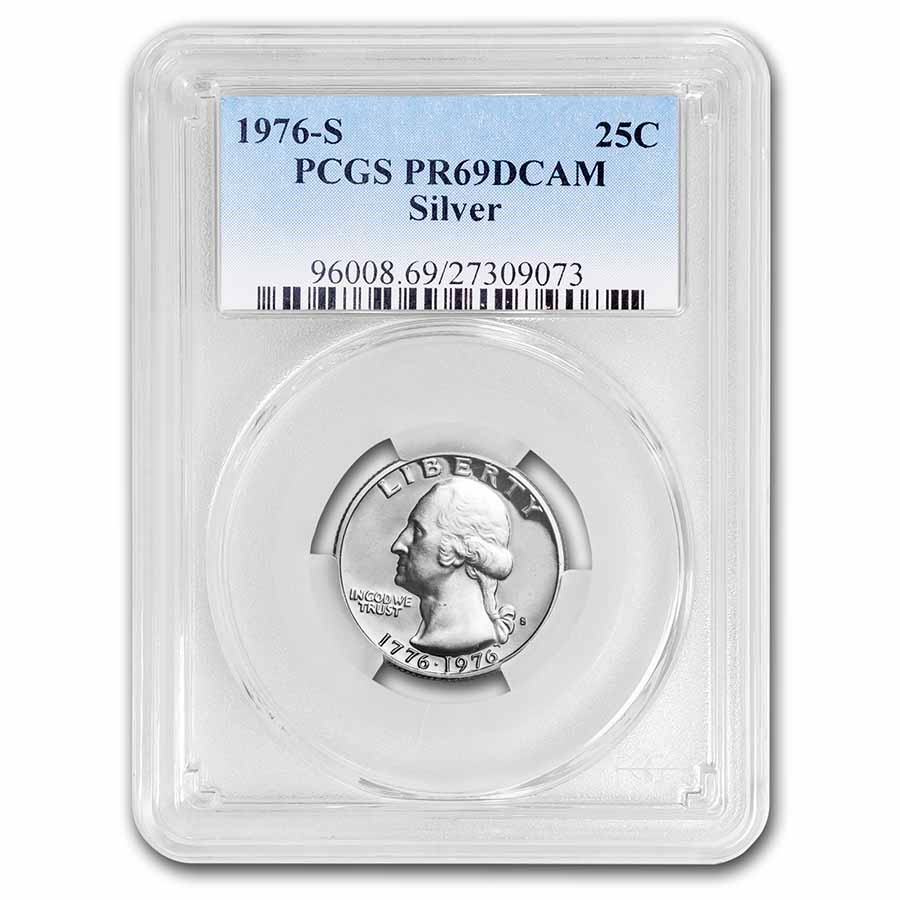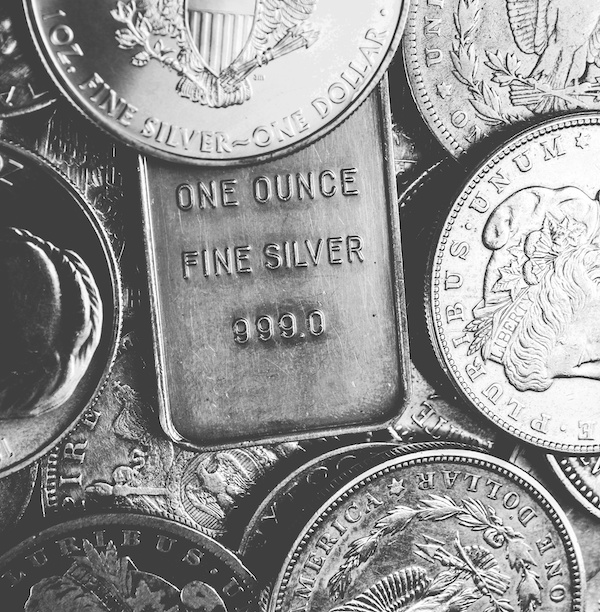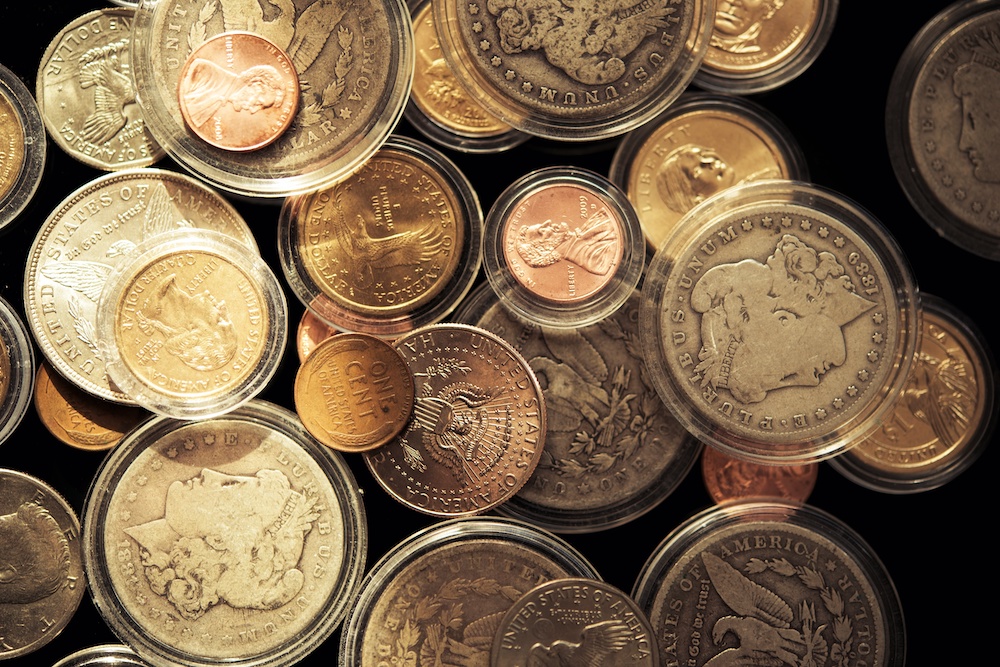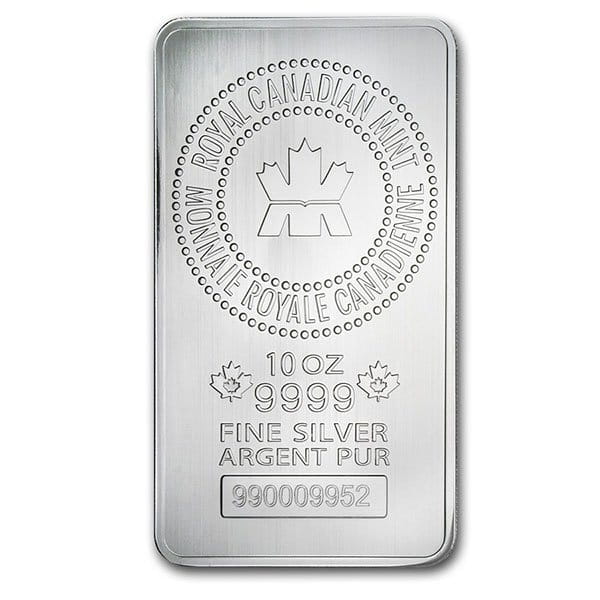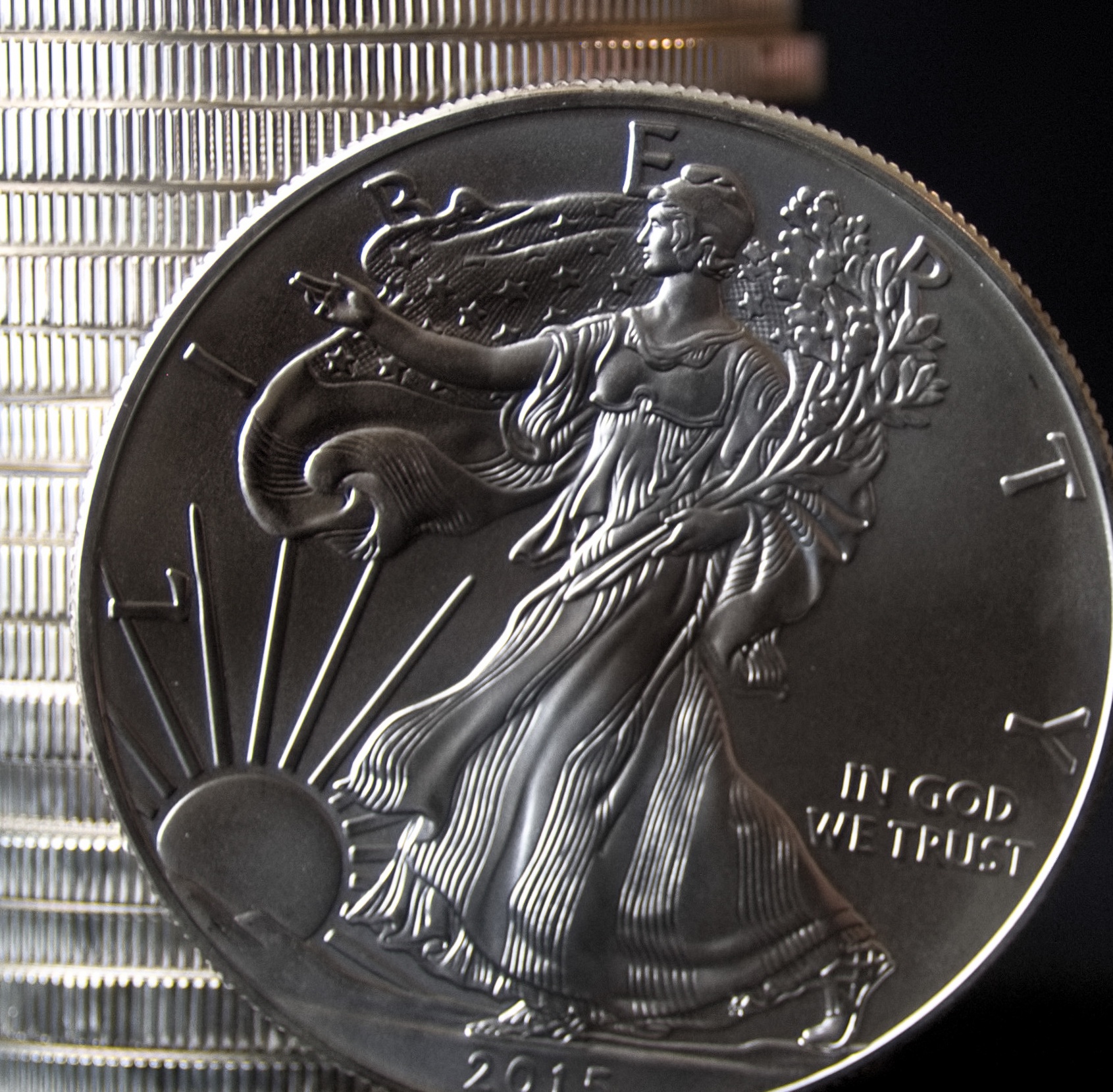Created to commemorate the 200th anniversary of the United States’ independence, the US Bicentennial Quarter was minted only in 1975 and 1976. Due to their unique commemorative reverse, they are among the most iconic coins in American numismatic history.
However, not all are created equal. Some Bicentennial quarters are worth more than others, particularly those with specific mint marks and conditions or those that contain silver. Let’s explore some factors that make certain Bicentennial quarters valuable and how to identify those containing silver.
Bicentennial Celebration
In the mid-1970s, the U.S. Mint celebrated the nation’s anniversary by holding public competition for commemorative reverse designs for the quarter, half-dollar, and dollar coins. The Mint held a public competition.
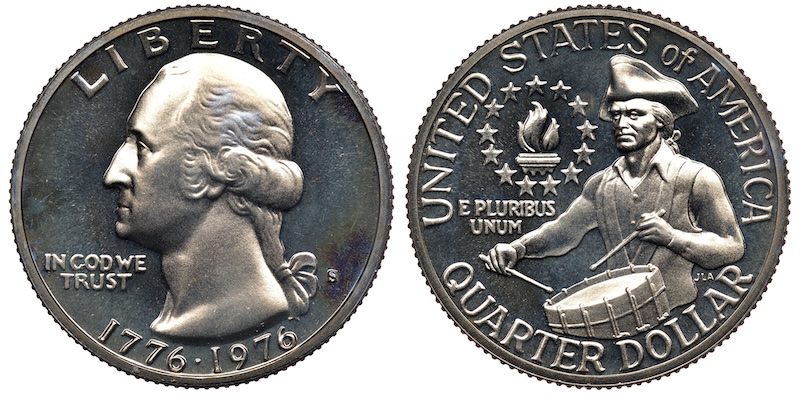
The winning design, created by Jack L. Ahr, features a colonial drummer boy with a victory torch encircled by 13 stars, symbolizing the original thirteen colonies. The obverse retains the familiar portrait of George Washington.
These coins were minted in 1975 and 1976, but all bear the dual date “1776-1976” to signify the Bicentennial. No 1975-dated quarters were produced. While most were released into circulation, proof versions were minted for collectors.
1776-1976 Bicentennial Quarter Values Chart
| Grade | Value |
| Good (G) to Very Fine (VF) | $0.25 (Face value) |
| Extremely Fine (XF) | $0.50–$1.00 |
| About Uncirculated (AU) | $1.00–$2.00 |
| Brilliant Uncirculated (BU/MS60-MS63) | $3.00–$6.00 |
| MS65-MS67 | $10.00–$20.00 |
1976 Quarter Mintages and Types
The Bicentennial quarters were produced in large quantities by the U.S. Mint at three locations: Philadelphia, Denver, and San Francisco. In addition to circulation coins, the Mint also issued proof and silver proof versions specifically for collectors. Below is a breakdown of the mintages from each mint location, including the proof varieties.
| Mint Mark | Mintage Amount |
|---|---|
| Philadelphia Mint (None) | 809,784,016 |
| Denver Mint “D” | 860,118,839 |
| San Francisco Mint “S” | |
| – Clad Proof Strikes | 7,059,099 |
| – 40% Silver Uncirculated Strikes | 11,000,000 |
| – 40% Silver Proof Strikes | 4,000,000 |
The Philadelphia and Denver Mints struck coins for general circulation. Almost 810 million 1776 Quarters were issued without a mint mark from Philadelphia. While they are not particularly rare, high-grade examples can still be valuable.
The Denver Mint produced the most significant number of coins, issuing more than 860 million Bicentennial Quarters with the “D” mint mark. Although most are worth their face value, a notable number of valuable error coins came from the Denver Mint.
The San Francisco Mint produced Bicentennial Proof Quarters for collectors. These coins were issued in both clad and 40% silver variants.
Clad-proof strikes feature a mirror-like finish as part of the standard proof sets. The mirror-like appearance of these proof coins provides a visual distinction against regular strikes.
San Francisco issued two of 1776-1976 Silver Quarter varieties. The 40% silver uncirculated strikes were included exclusively in Uncirculated Sets.
Similarly, the 40% silver proof strikes were included in a unique three-coin Silver Proof Set, which also included the Bicentennial half-dollar and dollar coins.
1976 Bicentennial Quarter Value
Just a fraction of the millions of the 1776-1976 quarters are worth more than their face value. The Bicentennial Quarter’s value depends on several factors, including condition, rarity, and whether it contains silver.
Full Drum Details
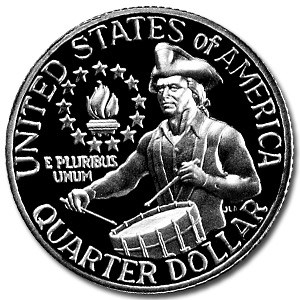
Quarters that have been circulated typically show signs of wear, diminishing their value. Many of the coins destined for circulation also contained weak strikes, and the details on the drum on the reverse are a sign to look for.
Uncirculated, Mint State and Proofs with high grades are worth more money than circulated coins.
Mint State (M.S.): Bicentennial quarters that are graded MS65 or higher exhibit sharp details and few, if any, imperfections. Depending on the exact grade and market conditions, such coins are worth between $20 to $30.
Proofs are struck using a unique process that creates a mirror-like finish. The U.S. Mint sells these coins directly to collectors and never intended them for circulation. Bicentennial proof quarters, particularly those in perfect PR70 condition, can fetch prices ranging from $10 to $50 or more, depending on demand.
Bicentennial Quarter Error Varieties and Value
1776-1976 Bicentennial Quarter Doubled Die Varieties
Doubled die coins result from a minting error where the die used to strike the coins has a misaligned or doubled image. Bicentennial quarters with doubled die errors are rare and can be pretty valuable. The most famous doubled die variety for the Bicentennial quarter is found on the obverse, where the doubling is evident in the inscriptions “LIBERTY” or “IN GOD WE TRUST.” These coins can sell for $100 or more, depending on the extent of the doubling and the coin’s condition.
Off-Center Strikes
Off-center strikes occur when a coin is not correctly aligned with the die during striking, resulting in a missing portion of the design. Bicentennial quarters with significant off-center strikes are uncommon and can be worth several hundred dollars, especially if the date and design elements are still clearly visible.
1976 D Quarter, Double Clip
A clipped planchet is a coin struck on a metal blank that was not fully formed. These errors result in a coin with a missing section, usually along the edge. Bicentennial quarters with clipped planchets are relatively rare and can be worth $50 to $150 or more, depending on the size and location of the clip.
How to Verify Silver Bicentennial Quarters
There are a few methods you can use to tell if your Bicentennial quarter contains silver:
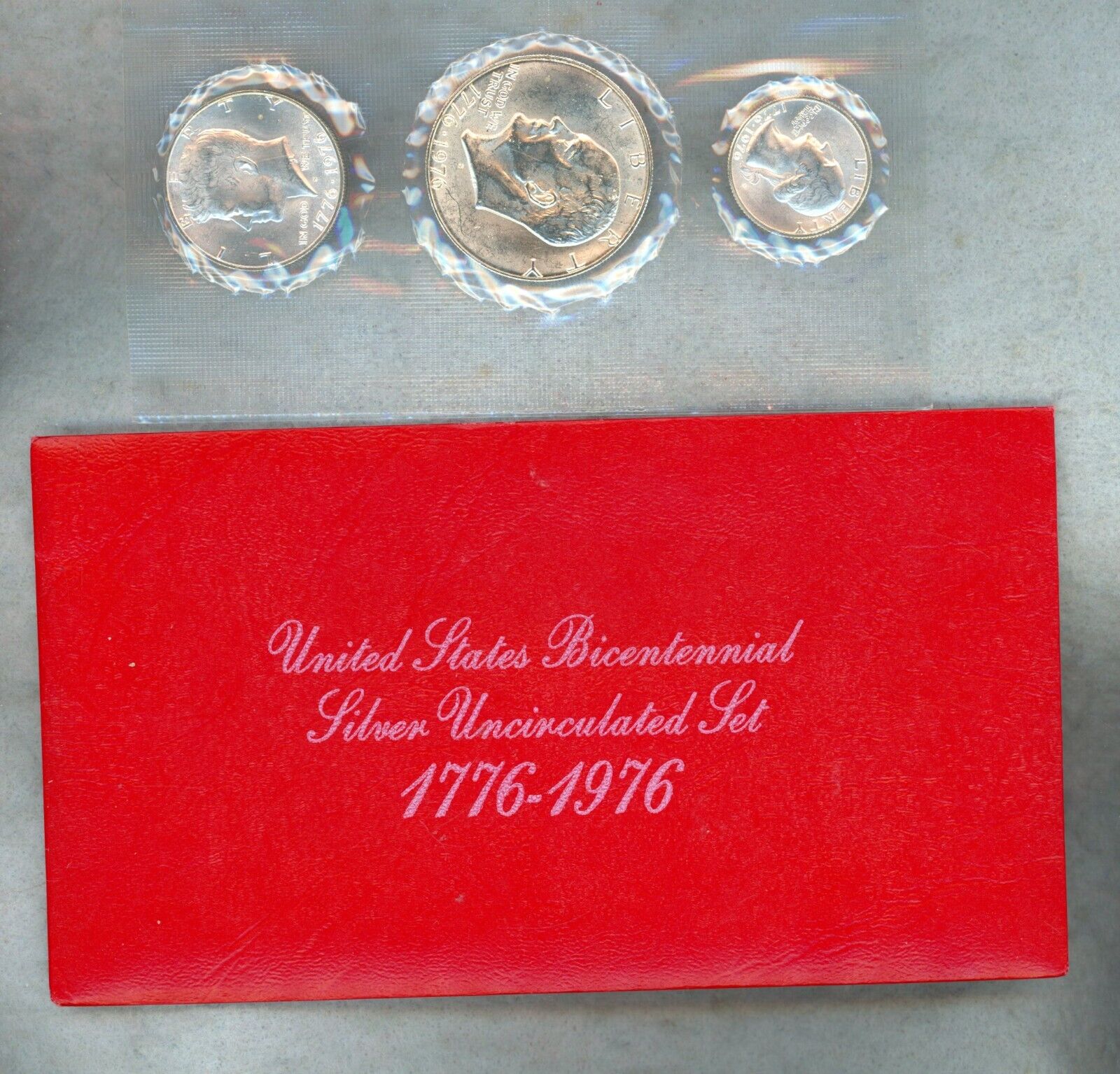
As mentioned earlier, silver Bicentennial quarters have an “S” mint mark, indicating they were struck at the San Francisco Mint.
Also, silver bicentennial quarters weigh more than their clad counterparts. A 40% silver Bicentennial quarter weighs approximately 5.75 grams, compared to 5.67 grams for a copper-nickel-clad quarter.
The edge of a Bicentennial silver quarter will appear uniformly silver. In contrast, a clad quarter will show a distinct copper stripe along the edge due to the copper core.
Silver quarters produce a distinct, high-pitched ringing sound when dropped on a hard surface, unlike the duller sound of a clad coin.
Final Thoughts
The Bicentennial quarter is a beloved piece of American history, and while most are only worth their face value, some can be valuable. Quarters in high-grade condition, with mint errors, or those containing silver are the ones to look out for. Whether you’re a seasoned collector or a casual enthusiast, watching for these valuable coins can be rewarding and enjoyable.
If you come across a Bicentennial quarter in your pocket change, take a closer look—with silver prices trending higher, you might have a small piece of history worth more than you think.
